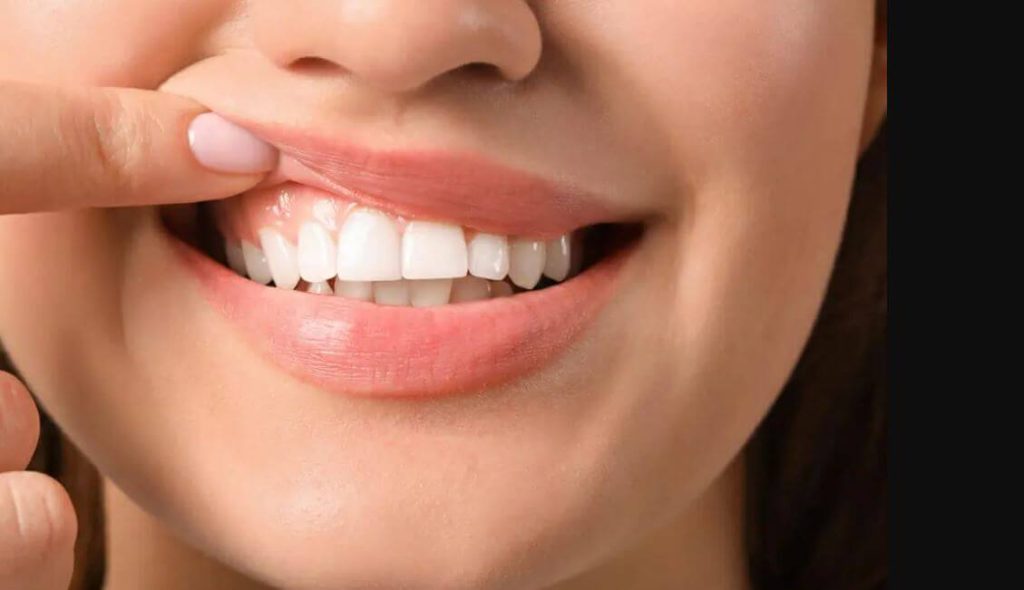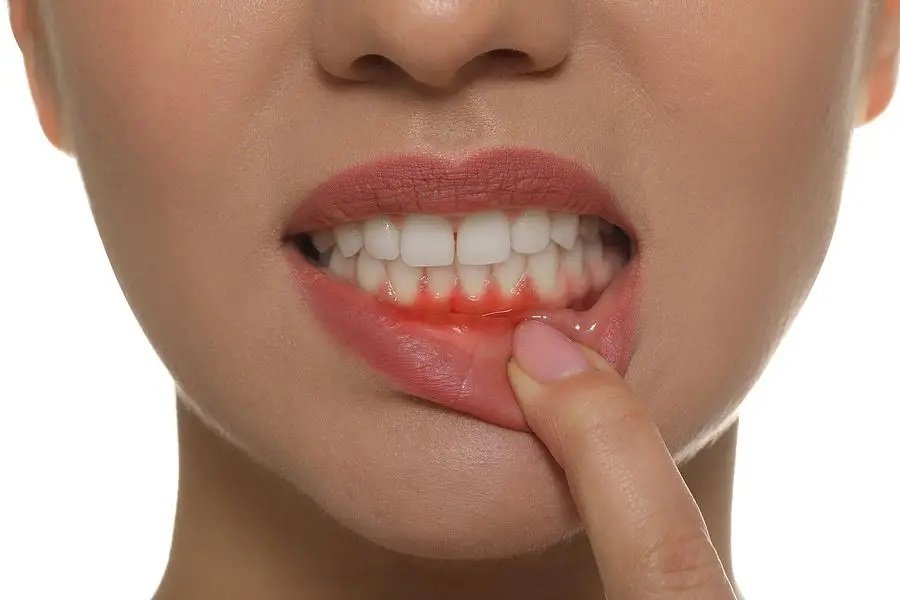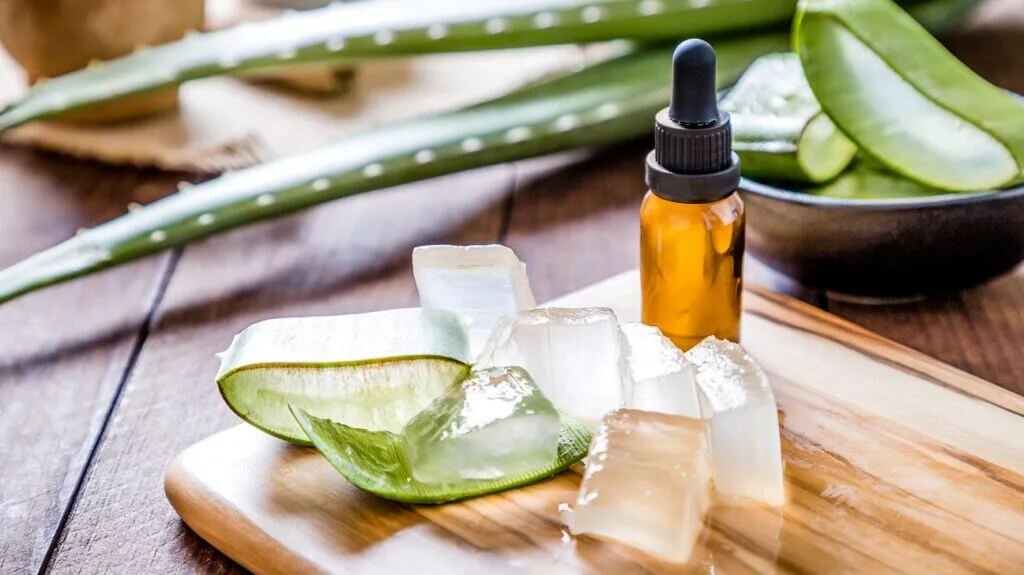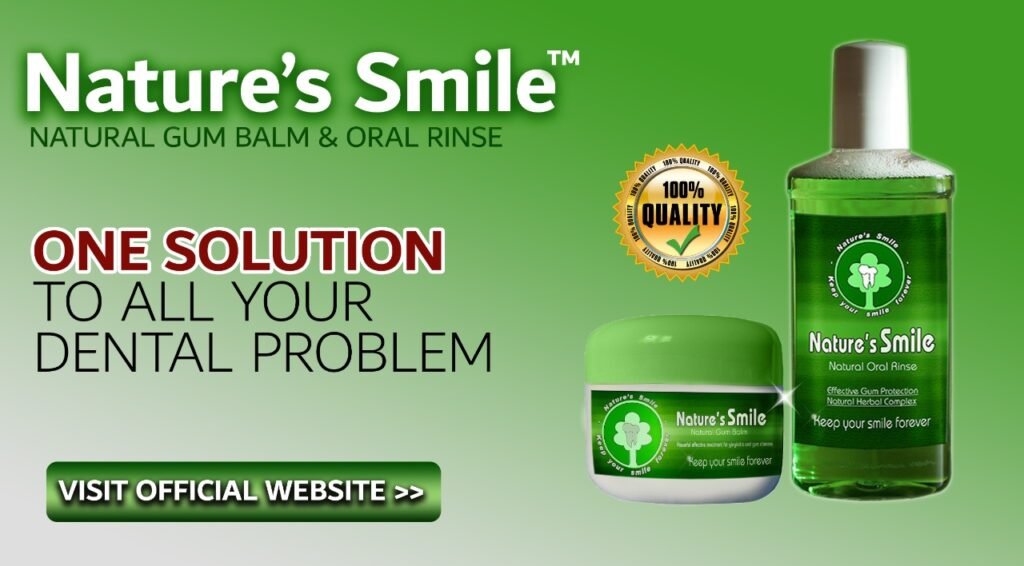Gum health is a crucial aspect of oral health, as it is significant in supporting teeth and maintaining stability. However, many individuals suffer from receding gums, leading to tooth sensitivity, pain, and even tooth loss if left untreated. Fortunately, there are Natural Remedies For Gum Regrowth available that can help stimulate gum regrowth and improve oral health. Understanding the causes and consequences of receding gums is essential in addressing this issue effectively. Receding gums occur when the gum tissue surrounding the teeth begins to pull away or wear down, exposing more of the tooth or its roots.
Poor oral hygiene habits, gum disease, aggressive brushing techniques, hormonal changes, or genetic predisposition can cause this condition. If left untreated, receding gums can lead to increased susceptibility to infections and tooth decay while compromising the aesthetic appearance of one’s smile. Consequently, seeking Best Natural Remedies For Gum Regrowth becomes paramount in restoring oral health and preventing further complications.

Understanding Receding Gums
Understanding receding gums involves exploring the causes and consequences of gum tissue loss. Receding gums, or gingival recession, occur when the gum tissue surrounding the teeth wears away or pulls back, exposing more of the tooth or its root. This condition can lead to various oral health problems if left untreated. Several factors can contribute to receding gums, including poor oral hygiene, aggressive brushing or flossing techniques, genetic predisposition, hormonal changes, tobacco use, and certain medical conditions such as diabetes or HIV/AIDS.
Signs of gum recession may vary depending on the severity of the condition. Common symptoms include tooth sensitivity to hot or cold temperatures and touch, noticeable gaps between teeth due to gum shrinkage, exposed tooth roots which can appear longer than usual, inflamed or bleeding gums during brushing or flossing, and halitosis (bad breath). It is important to note that receding gums can be a gradual process that often goes unnoticed until significant damage has occurred. Regular visits to a dentist are crucial in detecting early signs of gum recession and implementing appropriate preventive measures before irreversible damage occurs. By understanding the causes and recognizing the signs of receding gums promptly, individuals can take proactive steps in maintaining their oral health and preventing further complications associated with this condition.

Maintaining Good Oral Hygiene
Maintaining good oral hygiene is crucial in preventing the progression of receding gums and avoiding potential complications. An effective oral care routine is vital in keeping the gums healthy and promoting gum regrowth. Brushing your teeth twice a day with a soft-bristled toothbrush and fluoride toothpaste helps remove plaque and bacteria that can contribute to gum disease. It is important to use gentle, circular motions while brushing to avoid damaging the delicate gum tissue.
Natural remedies for bad breath can be incorporated into an oral care routine to enhance effectiveness. Some individuals may find that chewing on fresh herbs such as mint or parsley provides temporary relief from bad breath by masking odors. Rinsing with saltwater or using an antibacterial mouthwash containing ingredients like tea tree or peppermint oil may also help combat bad breath-causing bacteria. However, it is important to note that these natural remedies should not replace regular dental visits or professional advice for treating receding gums or underlying gum diseases.
Natural Remedies for Gum Regrowth
Herbs with regenerative properties can be utilized to enhance the natural healing process of gum tissue. Herbal remedies have been used for centuries in traditional medicine to treat various ailments, including oral health issues. Some herbs are believed to promote gum regrowth and help maintain healthy gums.
One herbal remedy that is commonly recommended for gum regrowth is aloe vera. Aloe vera has anti-inflammatory and antimicrobial properties, which can help reduce inflammation and prevent infection in the gums. It also contains vitamins and minerals that support tissue repair and regeneration. Applying aloe vera gel directly to the gums or using an aloe vera mouthwash may help stimulate gum growth.

Incorporating herbal remedies into your oral hygiene routine can be a natural solution for promoting gum regrowth. However, it’s important to note that these remedies should not replace regular dental care or professional treatment if you have severe gum disease. Consulting with a dentist or periodontist is essential to determine the best course of action for oral health needs.
Nutritional Support for Gum Health
This paragraph discusses the nutritional support for gum health, focusing on three key points: vitamin C-rich foods, omega-3 fatty acids, and green tea. Vitamin C-rich foods are important for gum health as they help in collagen synthesis and have antioxidant properties. Omega-3 fatty acids play a role in reducing inflammation and promoting overall oral health. Green tea contains polyphenols that have been shown to have anti-inflammatory and antimicrobial effects, which may contribute to gum health. Incorporating these nutrients into one’s diet may provide additional support for maintaining healthy gums.
- Vitamin C-rich Foods
Citrus fruits and leafy green vegetables are excellent sources of Vitamin C, a crucial nutrient for promoting gum regrowth. Vitamin C is known for its role in collagen synthesis, essential for maintaining gum tissue’s integrity and strength. Consuming foods rich in Vitamin C can help support the regeneration of damaged gum tissue and aid in gum healing.
To incorporate more Vitamin C into your diet, consider the following options:
1. Citrus Fruits:
Oranges, lemons, grapefruits, and limes are all high in Vitamin C. These fruits can be enjoyed independently or incorporated into various dishes and beverages.
2. Leafy Green Vegetables:
Spinach, kale, Swiss chard, and other leafy greens are not only packed with vitamins but also provide a good amount of fiber. Adding them to salads or stir-fries can boost your daily intake of Vitamin C.
3. Berries:
Strawberries, blueberries, raspberries, and blackberries are not only delicious but also rich in antioxidants and Vitamin C. They can be enjoyed as a snack or added to smoothies for an extra nutritional punch.
By including these vitamin-C rich foods in your diet along with other dental hygiene practices recommended by healthcare professionals like regular brushing and flossing techniques combined with professional cleanings— you can enhance your chances of supporting gum regrowth naturally while promoting overall oral health
- Omega-3 Fatty Acids
Incorporating a specific type of nutrient into your diet can profoundly affect the health and healing of gum tissue, and this nutrient is omega-3 fatty acids. Omega-3 fatty acids are essential fats crucial in various bodily functions, including reducing inflammation. Inflammation is a major factor in the development of gum disease, as it can lead to damage and loss of gum tissue. By incorporating omega-3 fatty acids into your diet, you may be able to promote gum regrowth and improve overall gum health.
Fish oil is one of the richest sources of omega-3 fatty acids. It contains two main types: eicosapentaenoic acid (EPA) and docosahexaenoic acid (DHA). These compounds have been extensively studied for their potential benefits in various aspects of health, including oral health. Research suggests that fish oil supplementation may help reduce gum inflammation, which can contribute to the regeneration of damaged gum tissue. A study published in the Journal of Periodontology found that individuals who took fish oil supplements experienced improvements in their periodontal status compared to those who did not supplement with fish oil. Furthermore, another study conducted by researchers at Harvard School of Dental Medicine showed that fish oil supplementation was associated with reduced levels of gingival index, which measures gum inflammation.

- Green Tea
Green tea has been studied for its potential benefits on gum health and inflammation reduction. Research suggests that green tea contains bioactive compounds, such as catechins and polyphenols, with antioxidant and anti-inflammatory properties. These compounds may help protect the gums from damage caused by harmful bacteria and reduce inflammation in the oral cavity. Additionally, green tea has been found to inhibit the growth of certain bacteria associated with periodontal diseases, such as Porphyromonas gingivalis. This can contribute to a healthier oral environment and promote gum regrowth.
To maximize the benefits of green tea for gum health, it is important to brew it correctly. Here are three brewing techniques to consider:
1. Water temperature:
Green tea leaves should be steeped around 160-180°F (70-80°C). Using boiling water can taste bitter and potentially destroy some of the beneficial compounds.
2. Steeping time:
Stepping green tea leaves for about 2-3 minutes is recommended to extract the desired flavours without over-extracting tannins that can make the tea taste bitter.
3. Quality of leaves:
Using high-quality loose leaf green tea instead of pre-packaged tea bags can provide a better taste and more potent health benefits due to higher concentrations of beneficial compounds.
By incorporating these brewing techniques into your daily routine, you can fully enjoy the potential benefits of green tea for gum health while savouring its refreshing flavour.
Oil Pulling for Gum Regrowth
One promising natural remedy for gum regrowth is oil pulling, a technique that involves swishing oil in the mouth to improve oral health. Oil pulling has been used for centuries in Ayurvedic medicine and is believed to have numerous benefits for oral health. One of the main benefits of oil pulling is its ability to reduce plaque buildup on the teeth and gums. This can help prevent gum disease and promote gum regrowth. Additionally, oil pulling has antimicrobial properties that can help kill harmful bacteria in the mouth, further promoting oral health.

To incorporate oil pulling into your daily routine, simply follow these steps:
1. Choose an appropriate oil: Coconut and sesame oils are commonly used for oil pulling due to their antibacterial properties.
2. Start with a small amount: Start with about 1 tablespoon of oil and gradually increase as you become more comfortable.
3. Swish the oil in your mouth: Take the oil into your mouth and swish it for 15-20 minutes, making sure to move it between your teeth and gums.
4. Spit out the oil: After 15-20 minutes, spit out the oil into a trash can or tissue. Avoid spitting it into sinks or drains as it can solidify and cause clogs.
5. Rinse your mouth: Finally, rinse thoroughly with water and brush your teeth as usual.
Incorporating oil pulling into your daily routine can be a simple yet effective way to promote gum regrowth and maintain good oral health.

Proper Mouthwash and Rinse Solutions
An essential aspect of maintaining good oral health is selecting appropriate mouthwash and rinse solutions. Proper brushing techniques alone may not be sufficient to promote gum regrowth, as using an effective mouthwash can provide additional benefits. Natural mouthwash recipes have gained popularity in recent years due to their potential to offer a gentler alternative to commercial products that may contain harsh chemicals. These homemade solutions often include tea tree oil, peppermint oil, and aloe vera, believed to possess antimicrobial properties that can help reduce plaque buildup and inflammation in the gums.
When using a natural mouthwash recipe, it is important to follow proper brushing techniques for optimal results. Brushing should be done twice daily with a soft-bristled toothbrush and fluoride toothpaste. Brushing gently in circular motions along the gumline is recommended to remove plaque and stimulate blood flow in the gums. Additionally, incorporating flossing into one’s oral hygiene routine can further aid in removing plaque from hard-to-reach areas between teeth.
An appropriate mouthwash and rinse solution is crucial for maintaining good oral health and promoting gum regrowth. Natural mouthwash recipes can serve as a gentle alternative to commercial products, potentially offering antimicrobial benefits that aid in reducing plaque buildup and inflammation in the gums. By following proper brushing techniques and incorporating flossing into one’s routine, individuals can optimize oral hygiene practices for healthier gums.
Quitting Smoking for Gum Health
Quitting smoking has been shown to significantly impact gum health, as smoking is a known risk factor for periodontal disease and can impair the body’s ability to heal and regenerate gum tissue. Smoking has been linked to an increased risk of developing gum disease, as it can weaken the immune system and hinder blood flow to the gums. This can lead to inflammation, infection, and ultimately the loss of gum tissue. Additionally, smoking reduces the effectiveness of treatment for gum disease, making it more difficult for the gums to heal properly.
Making lifestyle changes such as quitting smoking is crucial for improving gum health. Research has demonstrated that individuals who quit smoking experience improvement in their oral health over time. The harmful effects of smoking on the gums can be reversed with cessation of tobacco use. It is important to note that quitting smoking benefits gum health and overall well-being, including reducing the risk of various cancers and cardiovascular diseases. By taking this step towards better oral hygiene and overall health, individuals actively participate in their well-being while fostering a sense of belonging within a community prioritising healthy habits.

Professional Treatments for Gum Regrowth
One effective approach to promoting gum regrowth is through professional treatments provided by dental professionals. These treatments are designed to address the underlying causes of gum recession and stimulate the growth of new gum tissue. One common professional treatment option is gum grafting, where a small piece of tissue is taken from another part of your mouth (such as the roof of your mouth) and attached to the area where your gums have receded. This helps to cover exposed roots and restore a healthy gum line. Another option is flap surgery, which involves lifting the gums away from the teeth to clean and repair any damage caused by periodontal disease. This procedure allows for better access in removing bacteria and tartar buildup, reducing inflammation, and promoting healing.
While professional treatments can be highly effective in promoting gum regrowth, there are also natural alternatives that can complement these interventions. For example, practising good oral hygiene habits such as brushing twice daily with a soft-bristled toothbrush and flossing daily can help prevent further gum recession and promote overall oral health. Additionally, using an antimicrobial mouthwash or an antiseptic gel prescribed by your dentist may help reduce bacteria in the mouth and support gum healing. It’s important to note that natural remedies should be used under the guidance of a dental professional to ensure they are safe and appropriate for your specific condition. By combining professional treatments with natural alternatives, individuals can take a comprehensive approach towards achieving healthy gums and supporting long-term gum regrowth.

Frequently Asked Questions
Q. Can receding gums be reversed naturally?
Reversing receding gums naturally involves various treatment options and natural remedies for gum recession. These evidence-based approaches are clinically proven effective, providing informative solutions for individuals seeking a remedy for their condition.
Q. How long does it take to see results when using herbal remedies for gum regrowth?
The timeframe for seeing results when using herbal remedies for gum regrowth varies, and there is limited evidence to support their effectiveness. There is no research indicating that meditation can help with gum regrowth.
Q. Are there any specific foods that can promote gum regrowth?
Certain dietary choices can potentially promote gum regrowth. Incorporating foods rich in vitamins C and D, omega-3 fatty acids, and antioxidants may help support gum health and encourage tissue regeneration.
Q. Can oil pulling alone help with gum regrowth, or should it be combined with other remedies?
Oil pulling alone may not be sufficient for gum regrowth. While it can improve oral health, nutrition is crucial in promoting gum health. Combining oil pulling with other remedies and maintaining a balanced diet is recommended.
Q. What professional treatments are available for gum regrowth and how effective are they?
Professional treatments for gum regrowth, such as gum grafting and guided tissue regeneration, are available. Research suggests these treatments can effectively restore gum tissue, but individual results may vary.
For More Info Visit:
Summary
In summary, maintaining good gum health is crucial for overall oral health. Receding gums can indicate underlying issues and should not be ignored. Individuals can promote gum regrowth by practicing proper oral hygiene, including regular brushing and flossing, as well as using natural remedies and nutritional support. Additionally, using appropriate mouthwash and rinse solutions, reducing stress levels, and quitting smoking can further aid in regrowth.
It is important to note that while natural remedies for gum regrowth can effectively promote gum regrowth, professional treatments may also be necessary in severe cases. Dentists can provide specialized procedures such as scaling and root planing or gum graft surgery to restore gum tissue. It is always advisable to consult with a dental professional for personalized advice based on individual needs.
Overall, taking proactive steps to maintain gum health is essential for preserving the appearance and functionality of teeth. With consistent care and attention, individuals can achieve healthier gums and enjoy improved oral well-being. So don’t wait any longer – start implementing these strategies today for a smile that will make others green with envy!


